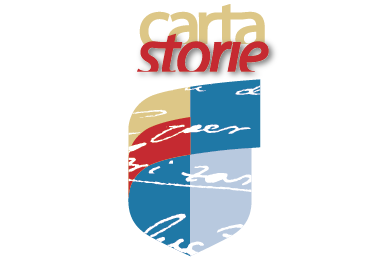THE BOURBON HOSPICE FOR THE POOR
The large complex ordered by Charles Bourbon was a symbol of the new ideas regarding assistance for the needy and the ‘reeducation” of the underprivileged classes. It was an attempt with clear associations with the Enlightenment to combat the widespread pauperism afflicting Naples at the beginning of the 18th century. It was also the focus of many documents – payments and annotations by the governors of the ancient banks – held at the Historical Archives of the Banco di Napoli.
His Royal Highness of our Majesty the King has resolved to constitute in his faithful city, similar to the most celebrated cities of Europe, a new Hospice to house the poor and teach the youth all of the necessary skills. July 15, 1750.
Was the enormous construction built next to Capodimonte Hill a grey prison? What were the personal stories of its many guests, young and old, men and women? Thanks to the copied texts from the 18th century, from the payment orders made in the name of the Royal Hospice, it is possible to reconstruct the daily life of those special ‘guests’: to know what they ate, how they spent their days, what they wore…
127,50 ducats for 200 shirts, 50 pairs of shoes and 50 canvas shirts, 231 rotola of rice 12 tomola of beans, 12 tomola of fava beans, 3 cantara of dried salted cod , 4 cantara of stockfish, 150 rotola of cheese, 424 rotola of beef, 24 stara of oil, 211 rotola of lard, 84 barili of wine
The activities of the young guests at the institution, and sometimes their names, alternate with the large payments made to complete the huge construction, and the investments made to create schools and shops in the same building. This continued alternation allows us to reconstruct the lives and stories of the poverty stricken people.
1774, 7 ducats for the charitable subsidy given to Francesca Annamaria Esposito, one of the lady residents at the Hospice, for her wedding.
1782, 4 ducats to Agnello Fontana as instructor to teach the poor young people in our General Hospice practical surgery and the art of leeching
1793, 4,100 ducats for machine tools, assembly plants, material, products and everything else needed to set up the production of silk drapes and tfor the instruction and useful application of 150 individuals, both male and female, who are kept at our general Hospice.
Sometimes, according to the documents, one of the more talented “guests” was able to find success outside of the institution. Some learned a trade and could finally emancipate themselves from their condition; others were talented in the arts, often in music, and they were sponsored by the Hospice to study at the prestigious conservatories…
1794, 10 ducats to the conservatory of Santa Maria di Loreto for the prepayment of the semester for the orphan Salvatore Gallo della Torre Annunziata, a young man who was employed by our Hospice as maestro di cappella and played the French Horn.
